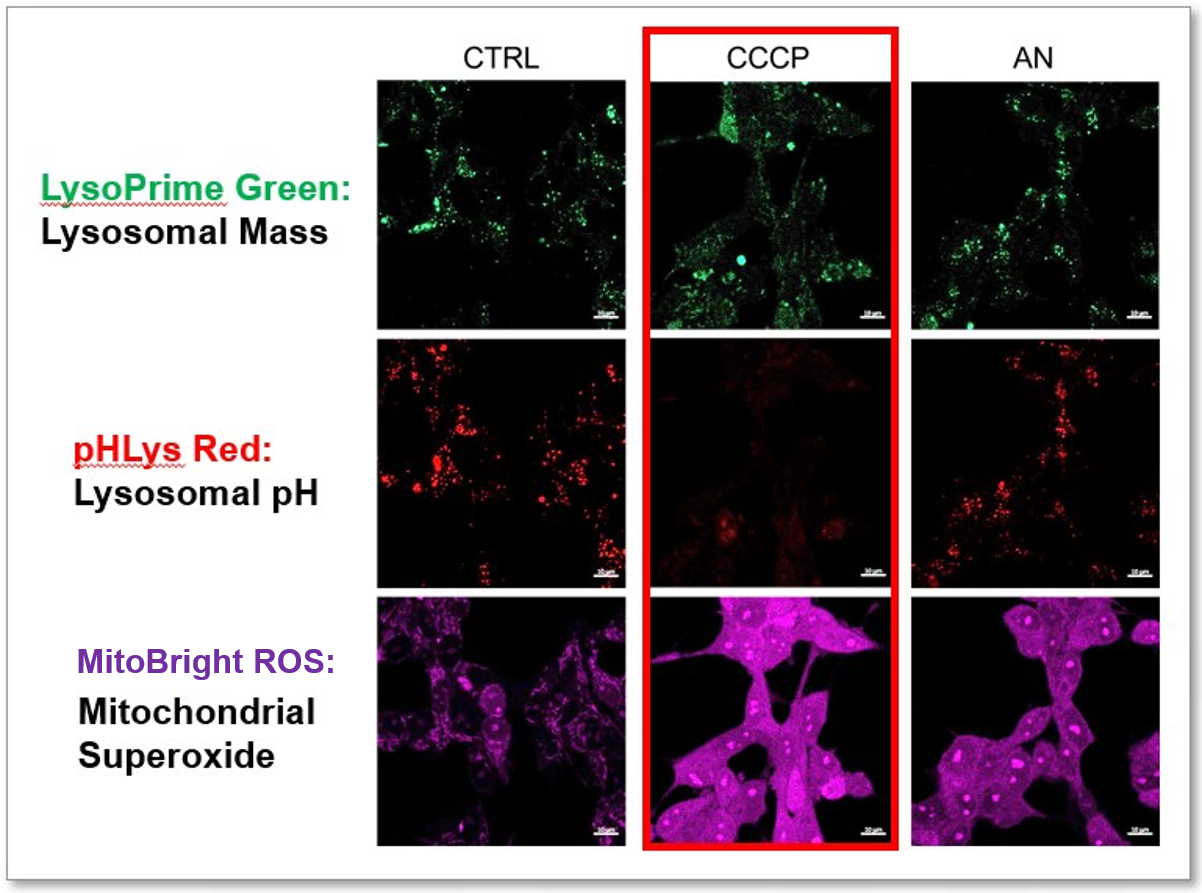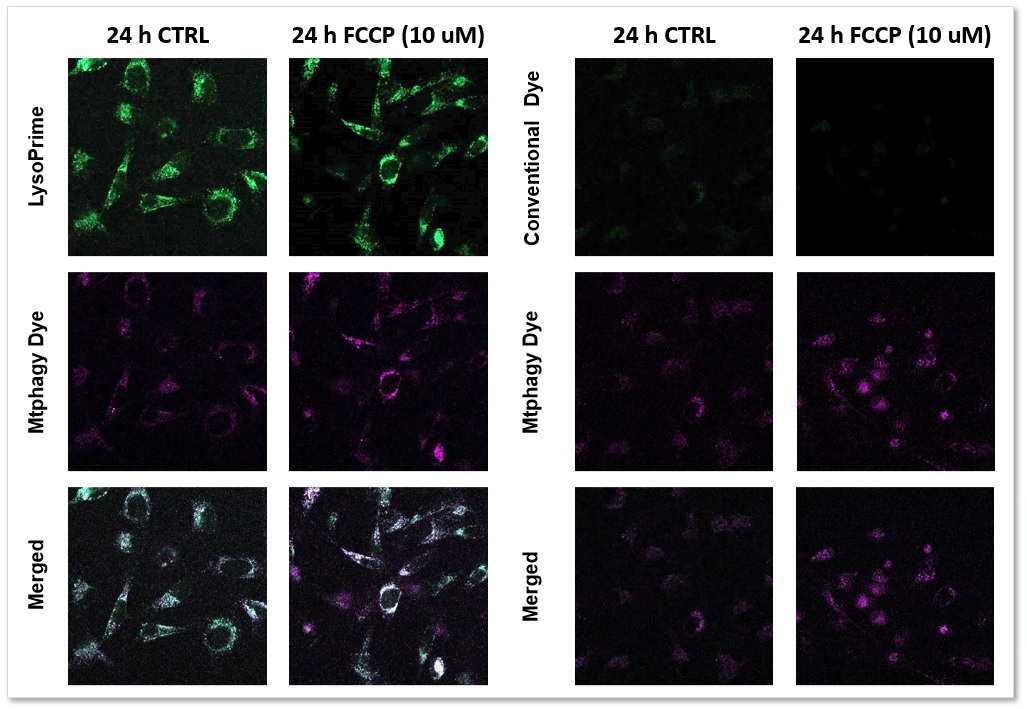|
Mitochondria are essential for maintaining lysosomal and autophagic homeostasis by providing the ATP required for lysosomal acidification and enzymatic function. They interact with lysosomes through signaling pathways and physical contacts, and coordinate the degradation and recycling of cellular components via autophagy. Efficient mitochondrial function supports the autophagic process by ensuring the removal of damaged organelles and proteins, thereby preventing cellular stress. Disruptions in mitochondrial activity can impair lysosomal function and autophagy, leading to the accumulation of cellular debris and compromised cellular homeostasis.
|
-
The mitochondrial intermembrane space protein mitofissin drives mitochondrial fission required for mitophagy
Click here for the original article: Tomoyuki Fukuda, et. al., Molecular Cell, 2023.
Point of Interest
- Mitofissin is a mitochondrial fission factor located in the mitochondrial intermembrane space that is required for receptor-mediated mitophagy.
- The mechanisms and roles of membrane fission by Atg44 differ from those of the known mitochondrial fission factors, the dynamin-related proteins Dnm1.
- Mitofissin-deficient cells cannot be enwrapped by the autophagosome precursor, the phagophore, due to the lack of mitochondrial fission.
- Mitofissin binds directly to lipid membranes and induces lipid membrane fragility to facilitate membrane fission required for mitophagy.
-
Mitochondrial protein C15ORF48 is a stress-independent inducer of autophagy that regulates oxidative stress and autoimmunity
Click here for the original article: Yuki Takakura, et. al., Nature Communications, 2024.
Point of Interest
- Thymic epithelial cells (TECs) may use stress-independent autophagy to degrade self-protein for generation of self-antigen peptides.
- The mitochondrial protein C15ORF48 induced by inflammatory stimulation reduces mitochondrial membrane potential, decreases intracellular ATP levels, activates AMPK, and ultimately induces autophagy.
- Autophagy dependent on C15ORF48 increases intracellular glutathione levels and promotes cell survival by reducing oxidative stress.
- C15orf48 deficient mice show a reduction in stress-independent autophagy, but not in typical starvation-induced autophagy.
- C15orf48 deficient mice develop autoimmunity, and furthermore, engraftment of C15orf48-deficient thymus into nude mice results in autoimmunity.
-
Cardiomyocyte-specific deletion of the mitochondrial transporter Abcb10 causes cardiac dysfunction via lysosomal-mediated ferroptosis
Click here for the original article: Yura Do, et. al., Bioscience Reports, 2024.
Point of Interest
- Abcb10 is a member of the ABC transporter superfamily located in the inner mitochondrial membrane and plays an important role in iron uptake into erythrocyte mitochondria.
- Cardiomyocyte-specific Abcb10 knockout mice show progressive worsening of cardiac fibrosis, increased cardiovascular risk markers and mitochondrial structural abnormalities.
- In addition, the mice exhibit increased Hif1α expression, decreased NAD synthase expression, reduced NAD+ levels and lysosomal dysfunction.
- Impairment of Abcb10 leads to the accumulation of iron and lipid peroxides in lysosomes, resulting in ferroptosis and contributing to the development of chronic heart failure.
|
| Related Techniques |
|
|
|
|
|
|
|
|
|
|
|
|
|
|
|
|
|
|
| Related Applications |
Lysosomal Function and Mitochondrial ROS

-
CCCP and Antimycin are recognized inducers of mitochondrial ROS, linked to the loss of mitochondrial membrane potential. Recent studies have shown that CCCP induces not only mitochondrial ROS but also lysosomal dysfunction. To observe mitochondrial ROS, HeLa cells were labeled with MitoBright ROS Deep Red for Mitochondrial Superoxide Detection, and the lysosomal mass and pH were independently detected with LysoPrime Green and pHLys Red. Co-staining with MitoBright ROS and Lysosomal dyes revealed that CCCP, unlike Antimycin, triggers concurrent lysosomal neutralization and mitochondrial ROS induction.
Reference: Benjamin S Padman, et. al., Autophagy (2013)
Products in Use
- LysoPrime Green
- pHLys Red
- Lysosomal Acidic pH Detection Kit
- MitoBright ROS - Mitochondrial Superoxide Detection
|
Lysosomal Function and Mitochondrial ROS

-
We performed fluorescence imaging by stimulating mitophagy induction in SHSY-5Y cells stained with Mitophagy Detection(Code: MD01) and LysoPrime Green or existing products. The fluorescence signal of LysoPrime Green did not decrease and the lysosomal localization over time was confirmed. This means that the co-localization rate of the fluorescent spots of the Mtphagy Dye is higher than that of the existing product, and thus more accurate mitophagy analysis can be performed.
LysoPrime Green: Ex= 488 nm, Em= 500-570 nm
Mtphagy Dye: Ex= 561 nm, Em= 560-650 nm
Products in Use
- LysoPrime Green
- Mitophagy Detection Kit and Mtphagy Dye
|

















